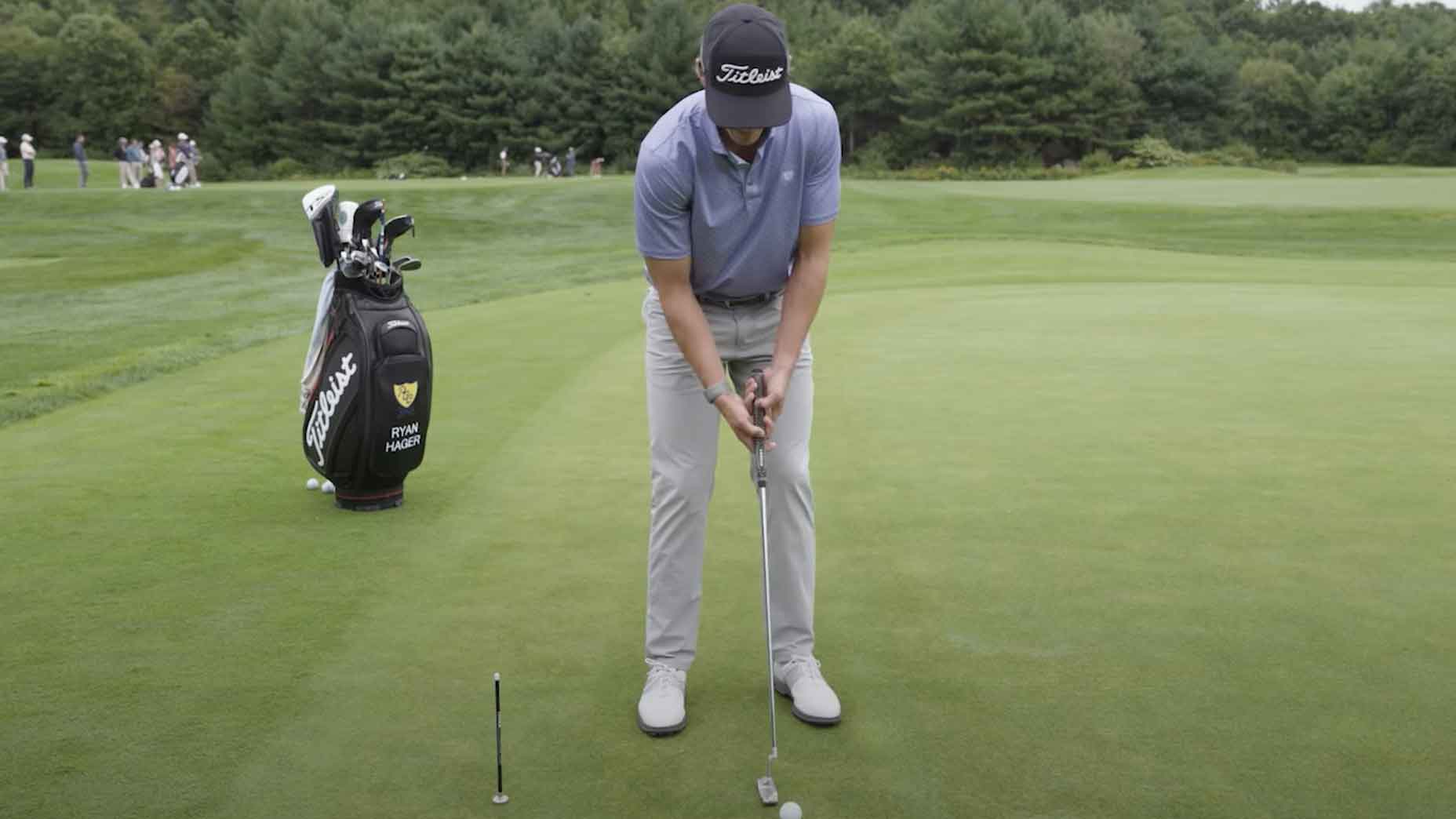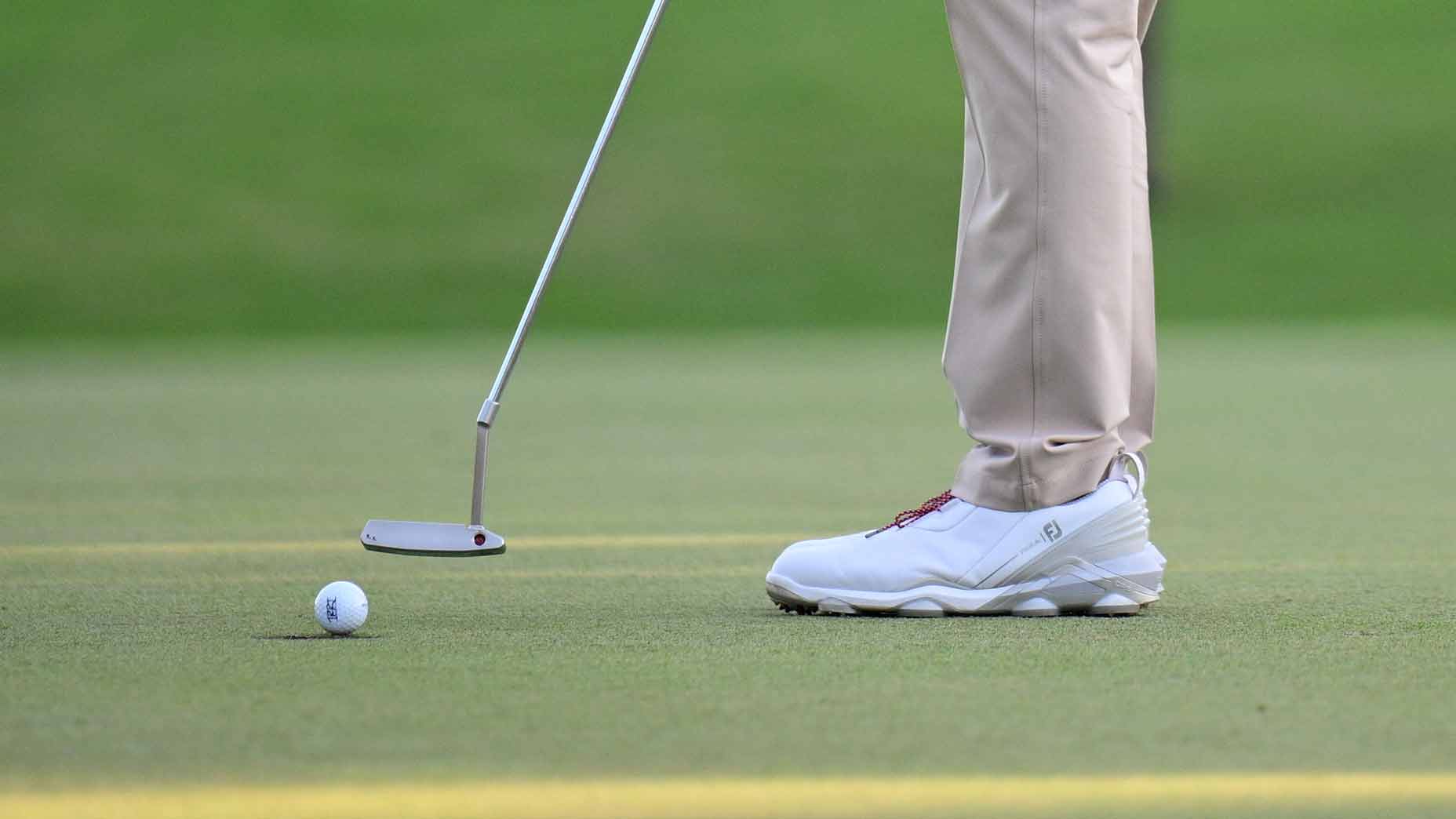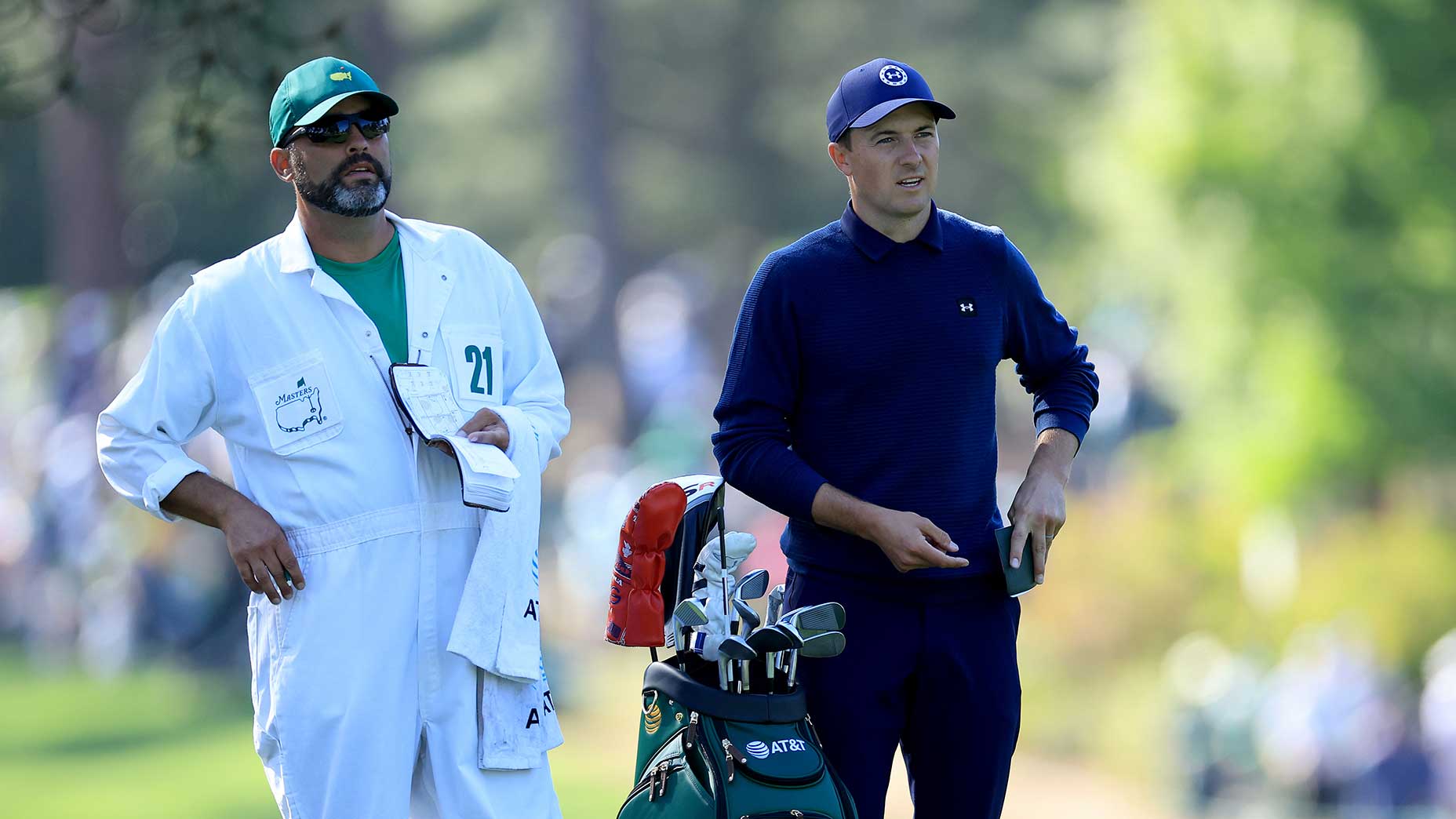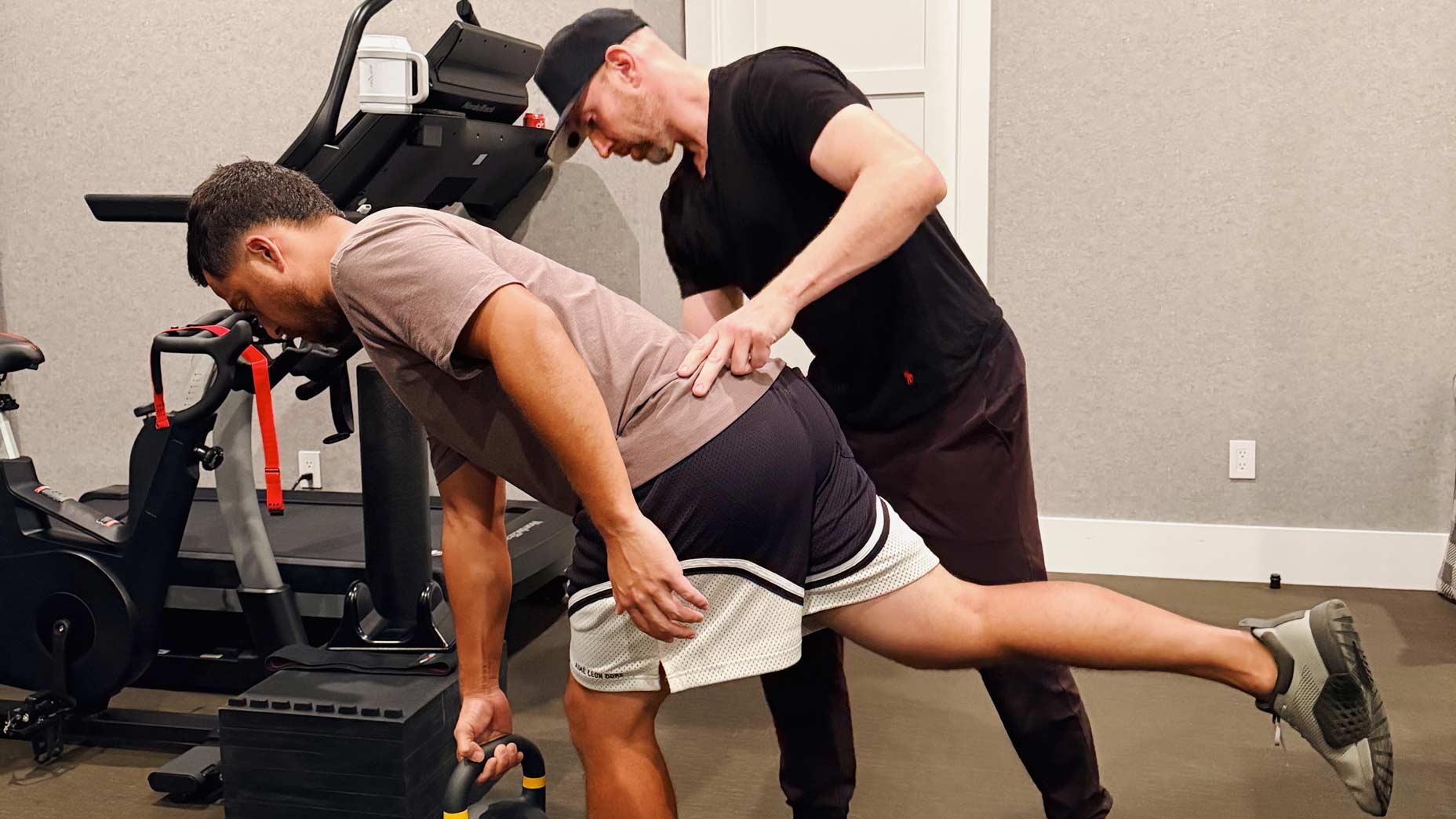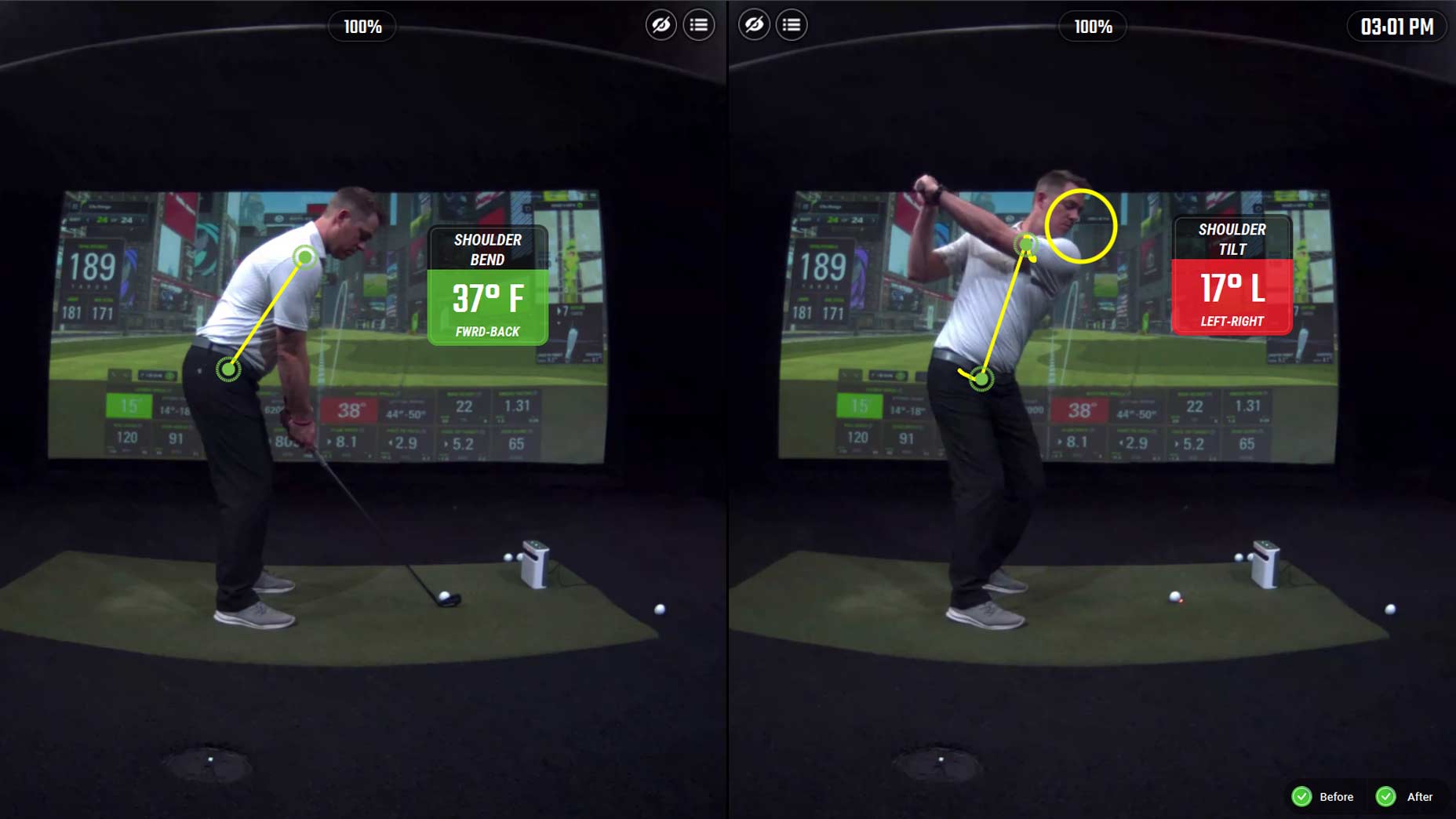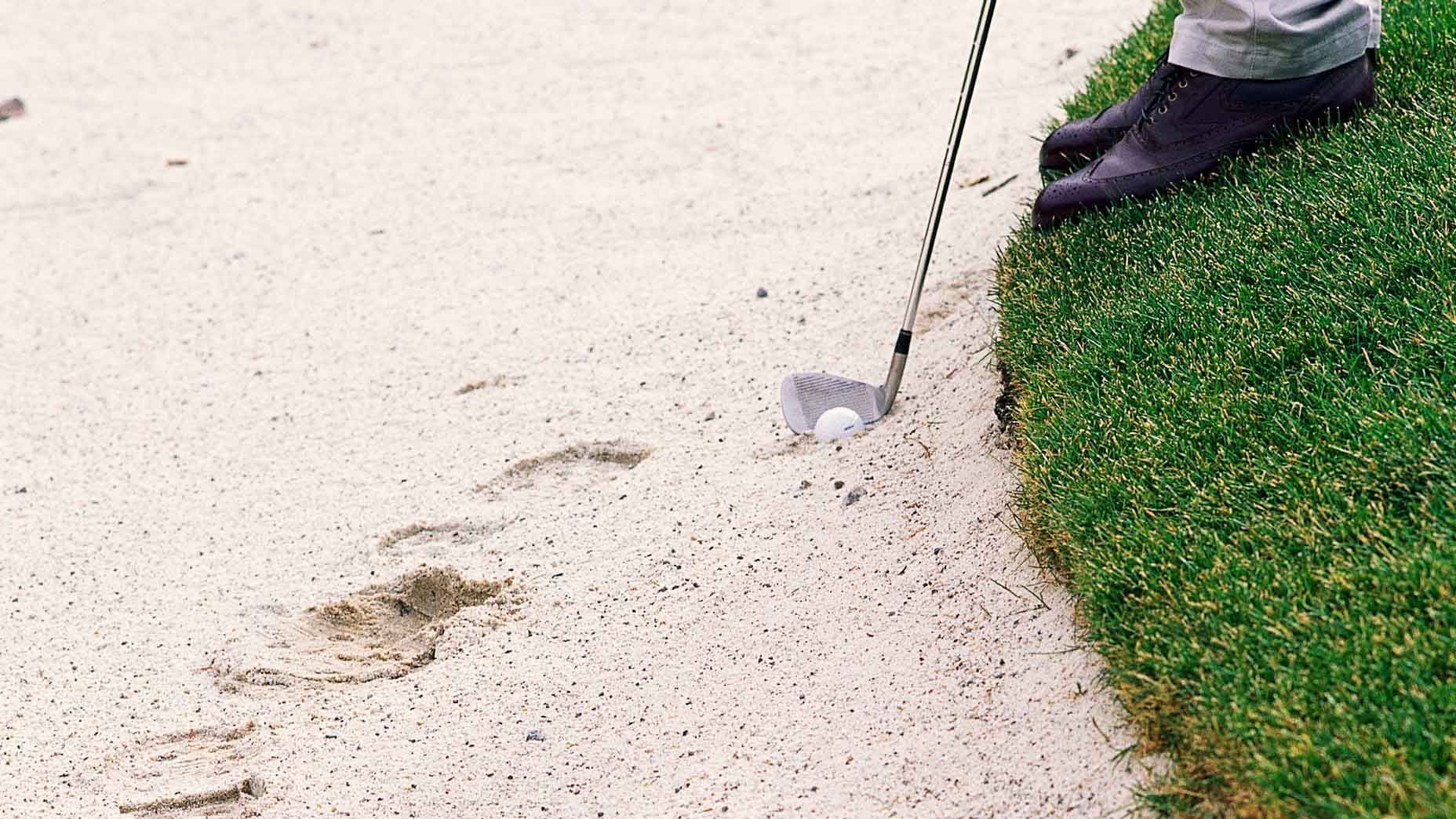Few golfers are overly optimistic when they’re faced with a putt from outside of 30 feet, but there are ways to excel in this part of your game: and one big key is muscle memory. A great way to do that is by using the easy long-distance drill seen below.
In the video from Titleist, it involves practicing an absurd 100-yard putt — yes, yards, not feet. While it’s admittedly ridiculous to practice from this distance, it allows a player to get the feel for their stroke.
So take a look at how using this drill can hone in your speed control, leading to better results with the flatstick.
Improve your speed control with this long-distance putting drill
In the video, host Ryan Hager says that practicing a 100-yard putt is “a goofy thing that’s just for fun, but it does make me think of long-distance putting.”
“When I play with amateur golfers, I notice a pretty common putting-stroke look,” he says. “It sort of looks slow and creaky [in the backswing] to long and fast [in the follow through]. I think it takes the flow and feel out of the stroke, and it makes it very hard to control your distance from long range and from short range.”
So how can amateur golfers get a better feel on the putting surface when they still have plenty of distance to the cup? Hager says using a very simple long-distance putting drill can help.
Should your putting stroke be arced or straight? Top 100 Teachers explainBy: GOLF Editors
Using a clubface magnet (or anything else that can balance on its own), Hager explains how to practice the drill.
“You’re going to put this about 18 inches behind the ball that you’re going to hit,” Hager says. “If you take that slow, creaky backstroke, you’ll never get to the clubface magnet. What I’m going to try and do in my backstroke is knock the magnet over, and swing the putter through.”
The goal of this drill is to let gravity take control of the putter, with the weight being properly distributed from back to front — rather than trying to increase momentum through contact, which provides little to no control.
When doing this, many amateurs see their putts roll way past the hole.
So by practicing this long-distance putting drill, you’ll start to develop better speed control from putts of all different lengths, providing a baseline of where the clubhead should be during both the backswing and follow through.
“This gives me the sense of a faster, more up-pace backstroke, which I feel adds momentum into the golf ball,” Hager adds. “This allows me to feel smooth through the hit and to generate speed through stroke length, rather than effort and intensity.”
